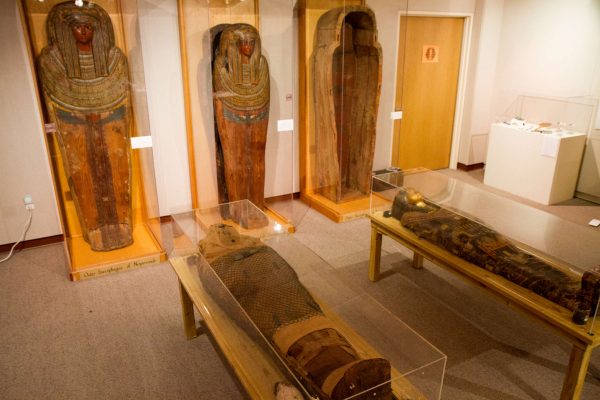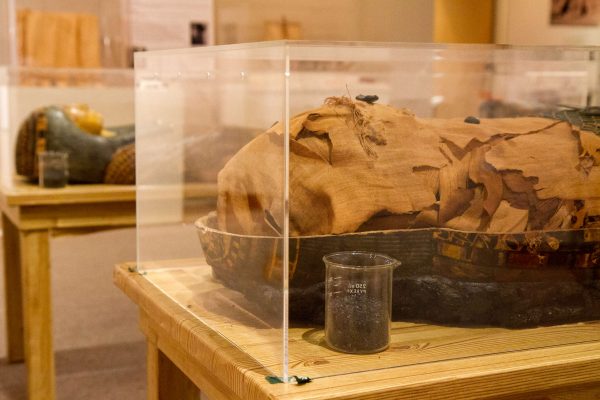
The Sutro Egyptian and Treganza collection will be moved as part of the University Museum’s relocation into the Fine Arts building next semester for specialized care and greater student accessibility.
“We are moving control of all collections in the College to Museum Studies and, thus, with the professionals who know how to care and manage them according to museum standards,” Interim Dean for the College of Liberal and Creative Arts Daniel Bernardi said in an email.
The Museum Studies gallery is located on the fifth floor of the Humanities building which, according to Museum Studies Professor and Director Edward Luby, has been inaccessible to students and local families who want to visit the museum.
Since then, the Treganza collection, which has been stored in the Science Building for almost two decades, has undergone tremendous enhancements, Bernardi said.
The Treganza collection carries an assortment of pieces, including Pacific Island masks and several wooden carvings of African storyboards. Many of the pieces originate from Mexico, China, the Philippines, East Asia and South America.
The University Museum move is part of a much bigger plan to unify the College of Liberal and Creative Arts, which is currently spread over six different buildings including Humanities, Creative Arts, Fine Arts and Burk Hall, according to Bernardi. To accommodate this move the Dance department lose one of two of their rehearsal studios, which students are petitioning against.
“It is not simply about unifying the college. That’s a goal, of course, but it’s also about space management,” Bernardi said. “We aim to return 17,000 square feet of classrooms and offices in Science and HSS building to the University as we have roughly that amount of space.” He added that the idea would be to free up space to optimize use in the current buildings.
As the University Museum assembles its collections, the new spaces must be prepared with adequate temperature systems, pest control supervision in addition to properly packing, storing and documenting items for future exhibits. The process could take the entire spring semester and possibly part of the summer, Bernardi said.
“The plan also is to move Museum Studies, along with its collections, into Fine Arts, and to create a collections space to house College collections, in addition to the gallery in FA 203,” said Luby. Once the final move takes place next semester, the Museum Studies gallery in HUM building will be re-purposed.

So far, only 50 percent of the Treganza collection has been properly documented and stored using materials that won’t interact with the objects and cause damage before it is completely moved and can be made public in the Fine Arts building, Luby said of the collection.
“Any object can be damaged by conditions that aren’t good for it,” Luby said. “We are starting from scratch, given what we found we thought it would be the best,” he said, regarding the care and storage of the Treganza collection.
Some University Museum graduate studies students are investigating ways to alter and make proper use of the collection’s future spaces, Luby said.
“We want to improve how things will be in the future (space),” Museum Studies graduate student Sophie Laidler said.
The Sutro Egypt Collection houses over 1,000 diverse pieces from ancient Egypt, Greece and Rome societies, according to the University Museum Collection website and is part of the Museum Studies Department.
The collection includes two mummified remains from Ancient Egypt; Nes-Per-N-Nub, one of three sarcophagus triple-nesting mummies in the country, and a second mummy referred to as Yellow Sarcophagus, which X-rays indicate was reburied with extra bones.
The collection was purchased in Egypt by Adolph Sutro, a former mayor of San Francisco, in the 1880’s, Luby said.
“The collection was displayed at the Sutro Baths in San Francisco from around 1895 to the mid 1960s,” he said and was later donated to the university by George K. Whitney Jr., the owner of the baths.
“The plan is to consolidate college museum and gallery operations into the Fine Arts building so that we have a centralized, readily accessible and collaborative exhibit ‘hub’ on campus,” said Luby. “Since the beginning, we have been wanting a gallery that can be more accessible.”




